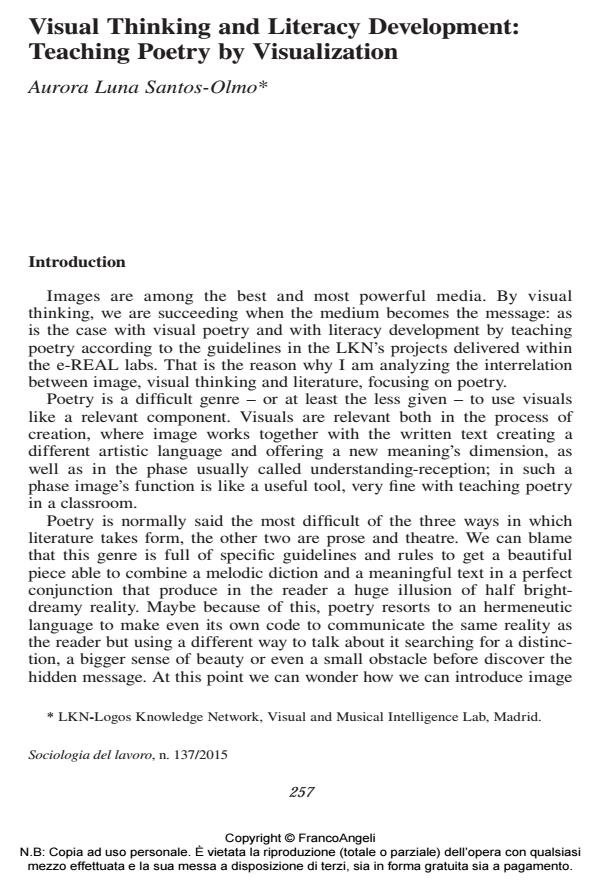Visual Thinking and Literacy Development: Teaching Poetry by Visualization
Journal title SOCIOLOGIA DEL LAVORO
Author/s Aurora Luna Santos-Olmo
Publishing Year 2015 Issue 2015/137
Language English Pages 13 P. 257-269 File size 175 KB
DOI 10.3280/SL2015-137016
DOI is like a bar code for intellectual property: to have more infomation
click here
Below, you can see the article first page
If you want to buy this article in PDF format, you can do it, following the instructions to buy download credits

FrancoAngeli is member of Publishers International Linking Association, Inc (PILA), a not-for-profit association which run the CrossRef service enabling links to and from online scholarly content.
The United Nations Educational, Scientific and Cultural Organization (UNESCO) defines literacy as the ability to identify, understand, interpret, create, communicate and compute, using printed and written materials associated with varying contexts. Literacy involves a continuum of learning in enabling individuals to achieve their goals, to develop their knowledge and potential, and to participate fully in their community and wider society. Images are among the best and most powerful media. By visual thinking, we are succeeding when the medium becomes the message: that is the case with visual poetry and with literacy development by teaching poetry accordingly with the guidelines from the LKN’s projects delivered within the e-REAL labs. That is the reason why in the paper are analyzed the interrelation between image and literature, focusing on poetry. Poetry is the more difficult genre - or at least the less given - to use visuals like a relevant component. Visuals are relevant both in the process of creation, where image works together with the written text creating a different artistic language and opening a new hermeneutic dimension, as well as in the understanding-reception, where image’s function is like a useful tool to teach poetry in a classroom.
Keywords: Visual thinking, literacy development, poetry, success stories
Aurora Luna Santos-Olmo, Visual Thinking and Literacy Development: Teaching Poetry by Visualization in "SOCIOLOGIA DEL LAVORO " 137/2015, pp 257-269, DOI: 10.3280/SL2015-137016